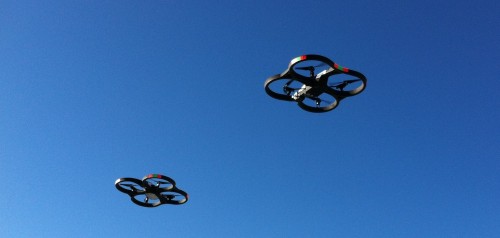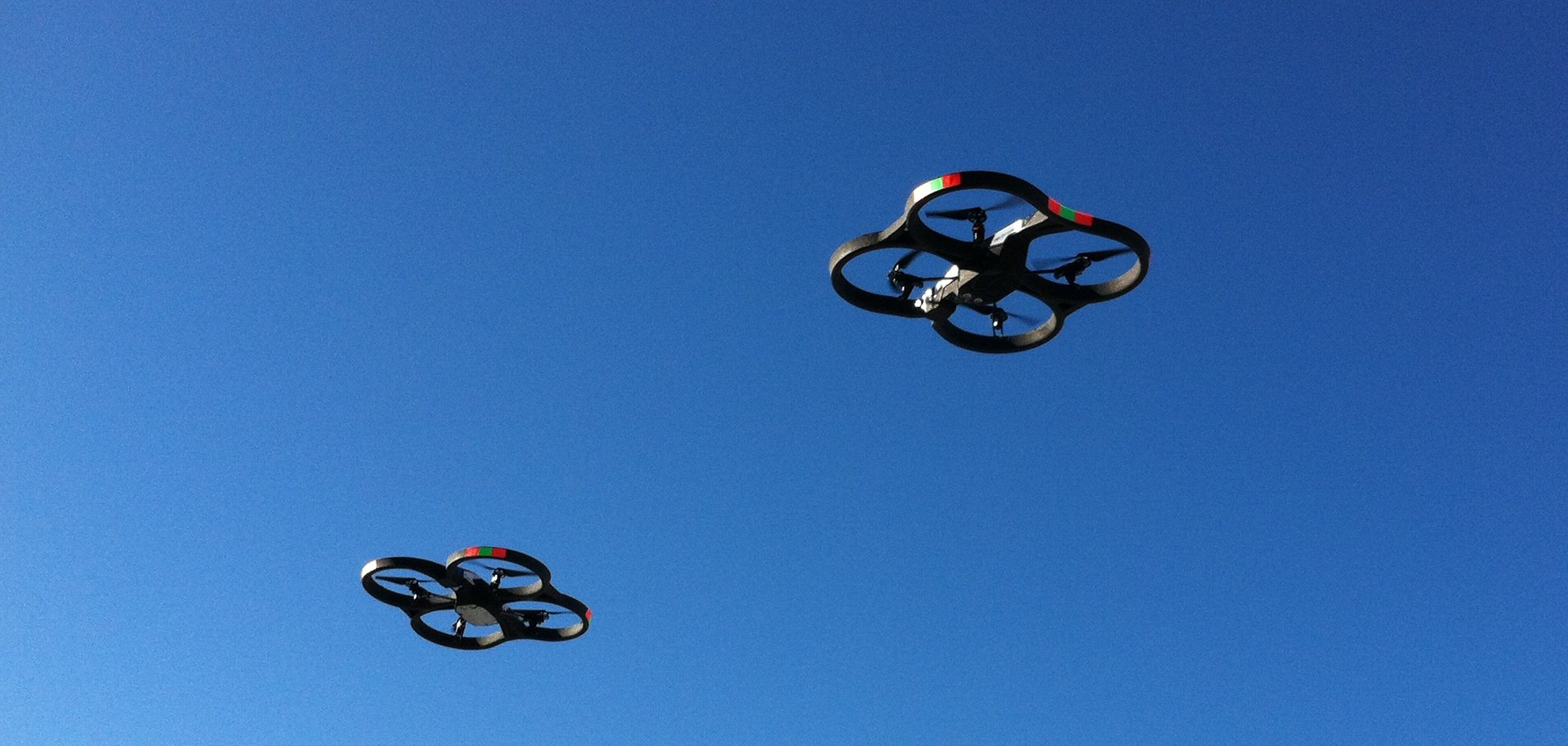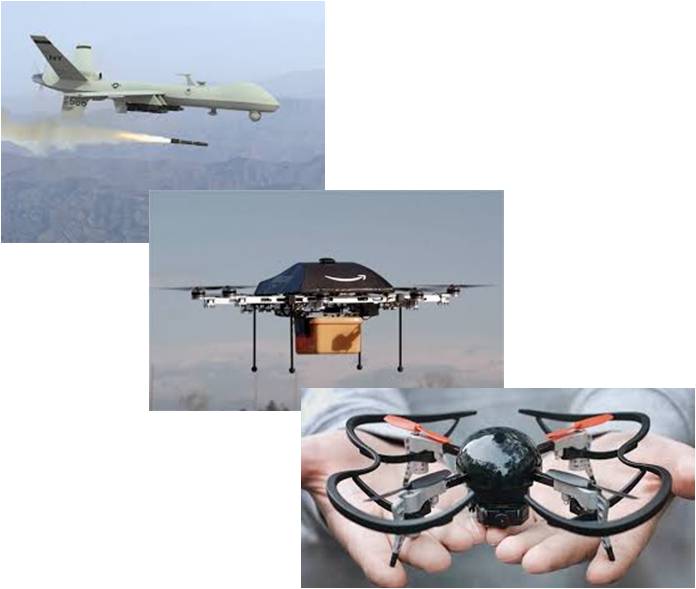February 28, 2016 – Continuing our series in which Peter Diamandis explores disruptive convergent technologies that are changing the 21st century, we hear from Chris Anderson, founder and CEO of 3DR. Chris is a former editor-in-chief of Wired Magazine. His work at 3DR is having far reaching consequences, creating a community of drone users, from scientists to business people, and from the military to recreational enthusiasts. 3DR most recently launched SOLO, a smart drone that can turn any operator into a movie director. Don’t take my word for it. Check out the video link here.
And if you think drones are just a passing fad or restricted to military applications, then you will want to read this posting because that’s as far from today’s reality as possible. And according to Anderson, we ain’t seen nothing yet.
———-
Top 5 Recent Drone Breakthroughs: 2012 to 2015
1. Drones go into mainstream business in Construction, Oil/Gas and Agriculture.
Over the past few years, drones have moved from the “government phase” to the “consumer phase” into the “commercial phase.”
In the consumer phase, the drone was more a toy than a tool. The video capabilities and simple flight interfaces made them fun and accessible. But more recently, these toys have been rapidly turning into tools, and we’re thinking of them now as “sensors in the sky.”
States Anderson, “It’s almost like we forget about the drone. Now, we are just connecting a sensor to the cloud and that sensor’s in the air. It’s below the satellites and above street view.”
These drone sensor platforms are now used in real estate, precision agriculture, oil and gas, construction, and many other domains.
2. Cloud-connected consumer drones run distributed computation, running apps on drones, phones and the cloud simultaneously.
Anderson remarks, “With today’s drones you get connectivity, you get the cloud, and if you architect your system correctly, the drone is just an extension of the Internet.”
When you distribute the computational task between these three things (the drone, the cloud, and the Internet), you get a very powerful platform that can do an extraordinary number of things intelligently and at scale – think of it as extending the App Store into the physical world and sky.
3. Powerful onboard Linux processors appear on sub-$1,000 drones.
“Drones are very powerful computing platforms,” says Anderson. “They now have built-in, Linux-based, computer vision technology. They look like toys (and you can use them as toys), but they’re really flying AI platforms, and this is just the beginning.”
“Right now we’re doing 1 gigahertz but with these converging technologies, we’re going to be moving to multicore, multi-gigahertz GPUs, DSPs, the works and they’re going to be selling for less than a thousand bucks.”
4. Industry consortia (e.g. Dronecode) emerge to build open software stack, drone policy leadership not driven by military.
Over the past few years, nonmilitary consortia have emerged to push drone technology and collaboration forward. This particular movement is unique and impressive not only because so many people are collaborating and sharing, but also because it is so interdisciplinary.
Anderson expands, “We have the computer side; we have the computer vision side; we have the AI side; we have the cloud side; we have the applications side. No one company or industry knows all the potential applications.”
5. Prices for autonomous GPS-guided drones fall 50% (US $500), go mass-market retail.
Drones are demonetizing rapidly. Ten years ago, drones were million-dollar military/industrial things. Today they are on the shelves of Walmart. But it doesn’t stop there. Anderson explains further, “They started at $1,500 and now they’re at $500 and they’re soon going to $50, with even better technology onboard. The price decline in the industry is staggering.”
So what’s in store for the near future?
Top 5 Anticipated Drone Breakthroughs: 2016 to 2018
Here are Anderson’s predictions for drone technology over the next three years.
1. Drones will increasingly be based on cutting-edge smartphone technology (Qualcomm Snapdragon platform).
The drone industry is leveraging billions of dollars of investment going into this kind of revolution in our pockets. We are using commodity hardware and open-source software to outperform military systems faster and cheaper. “This is just the beginning,” states Anderson. “You will basically see supercomputer performance in toy level devices, just as we’re already seeing with smartphones.”
2. Computer vision, sense-and-avoid and optical tracking will become standard in consumer drones.
The next big breakthrough in drone research will be “sense-and-avoid.” Right now, drones are either manually piloted or GPS piloted, but as we integrate them into our urban fabric, they’ll need true autonomy. Anderson expands, “Drones will need to have eyes. Sensors like radar, LiDAR, stereo vision, sonar, and they’ll need to use this to autonomously avoid obstacles and fly. It’s environmental awareness and it is necessary to safely navigate worlds they’ve never explored…..Eventually, the data from autonomous drones will convince the regulators that they’re safer than having a pilot.”
3. Major software companies will integrate drone data into core offerings, taking “reality capture” mainstream.
“It’s really hard to digitize the physical world,” says Anderson. “Satellites are too high, and two-thirds of the planet’s covered by clouds at any given point in time. Street View is limited to the street. The way we’re going to digitize the planet is by putting sensors out there on drones, with anywhere/anytime access to the sky.”
Once we do that, we’ll create the biggest big data opportunity we’ve ever seen. Autodesk, Salesforce, SAP, Google, etc. want to take that data and turn it into analytics to track all kinds of things.
4. Drones will surpass satellites in the amount of data gathered and used.
A transition is happening — Earth observation started in the space age with satellites. Anderson continues, “I believe we’re going to see drones become the main way that we digitize the planet from the air. Satellites are going to be complimentary, covering big areas but at lower resolution.”
5. Drones will become like WiFi.
“Today the FCC doesn’t have to regulate or give you a license for WiFi because it’s low power and self-de-conflicting – it’s not a threat to anyone,” says Anderson. “In the future, as drones become small enough, with low kinetic energy, and smart enough, I believe the FAA will regulate them like WiFi. We want the FAA to create kind of an ‘open spectrum’ sandbox to allow for a huge amounts of innovation.”

















